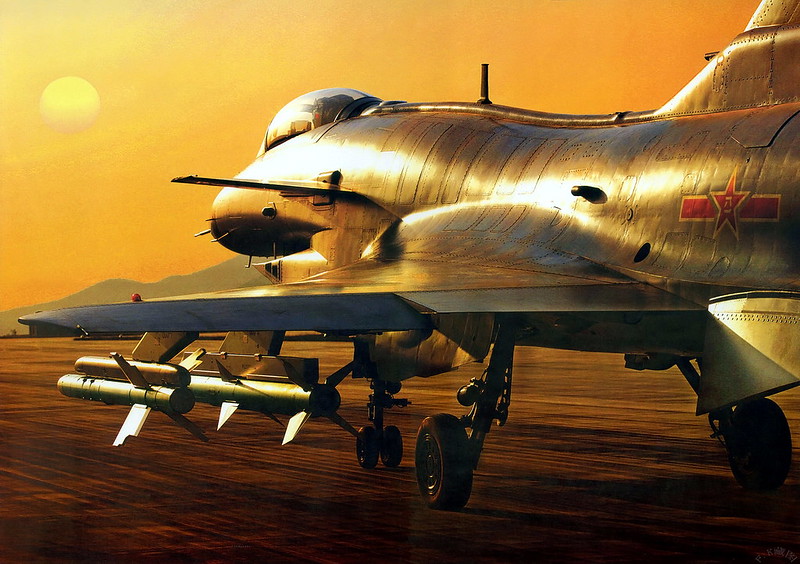One of the main drivers in China’s 3D printing development is to aid the nation’s ambitions in aviation. A sustained, decades-long, dizzying rise in wealth through technological and manufacturing progress has made the country wealthy, allowing its ambitions to take flight. There are a number of reasons why aviation, in particular, is a target for Chinese industrial policy.
The most obvious one is defense. For much of its early industrialization, the Chinese government had to rely on Soviet fighters, aircraft and aviation technology. This dependency became a woeful one during the Sino-Soviet split. Ostensibly allied, the Chinese and Soviet governments were miles apart as to the future of communism, the true state of the world, and foreign policy. A pariah state at this point the country became cut off from its Soviet ally and was in a precarious position in terms of not being able to marshall the resources to develop and make fighters and other aircraft itself. For a country that was previously invaded and suffered for a century due to technological gaps, the fear of being subject to foreigners’ whims and incursions must have been especially palpable—particularly with the U.S. military apparatus encircling it in its Asian invasions.
During the 50s and 60s, China’s place on the world stage was minimal and the country was vying for local influence in its own sphere. It had major developmental issues and was poor. It could not really dream of having state of the art aircraft and air defenses.
Relying on licensed Mig 15s and 17s made in China initially made sense, but during turbulent times domestically and locally, the country knew it needed to develop an indigenous fighter aircraft. The Shenyang Y-8 was China’s flagship fighter. It first flew in 1969 and entered service in 1980, underscoring the difficulty in fighter development and the political issues in China at the time.
In 1996, the country purchased 200 Russian SU 27 Aircraft and reassembled them. This was a difficult process and all subsystems were Soviet, as well. Eventually the reassembled fighter became the J-11. In the 90s, a cash-hungry Russia was eager to do business, but China still didn’t have the money or prowess to dream of making its own plane. The next version, the J11B, had some Chinese subsystems, showcasing the Chinese gradualist approach to working together with foreign partners to advance its own technological independence when possible.
China subsequently cancelled the remainder of the Sukhoi contract and continued to make the plane itself, now with Chinese radar. Continued development kept much of the airframe, but upgraded avionics and the like, resulting in the J-11D and other variants. With old airframes and modern electronics, many of China’s fighters are a bit improvised. Given how technologically advanced China is, it can also be a bit surprising to learn that many of its current aircraft are build on top of Soviet technology still.
Worse yet, “while China’s industrial sector has made considerable strides in providing an adequate supply of engines to the nation’s air forces, Beijing is still far from being completely self-sufficient in that area, especially when it comes to the new types of aircraft.” Indeed, the country is far from independent:
“[T]he J-11B has been encumbered by a major weakness: its domestically produced WS-10A Taihang turbofan engines. There is disagreement over whether the WS-10A is an attempted clone of the AL-31F, or an indigenous design incorporating elements of the American CFM56 engine acquired during the eighties. At one point the WS-10As were reportedly requiring overhauls every thirty hours of flight time, compared to four hundred hours for the original Russian AL-31F engines in the Su-27. The J-11B fleet had to be grounded and refitted with AL-31Fs.”
Without its own airframe, engine, and avionics China will never be unfettered. Without being able to do it all itself, it will never really be able to undertake a truly independent foreign policy or defense strategy. So the country must advance in airframe, avionics, and aero engines. This is not just a nice thing to have, but a way for the Panda to truly be its own master and the master of its own future. It needs to credibly be able to carry out a sustained defense and conflict to be able to safeguard its own independence.
Current developments on the J-16 are, therefore, of more than a passing interest to Chinese leadership. Itself derived from the Sukhoi-based J-11, the aircraft does showcase some elements of future Chinese aviation parity. An AI-based copilot is apparently a part of the latest variant of this plane that has been over ten years in the making. But, whilst they could perhaps develop the best AI pilots in the world, it will all come to naught if they have to call Vladimir every time they need a new engine.
Images: LG Internet, LG Internet and Gary Todd.
